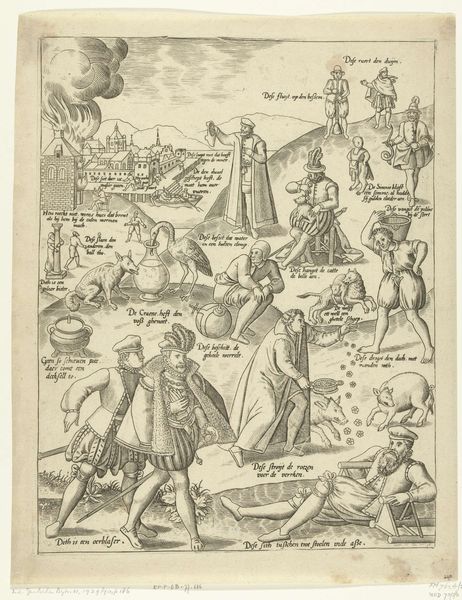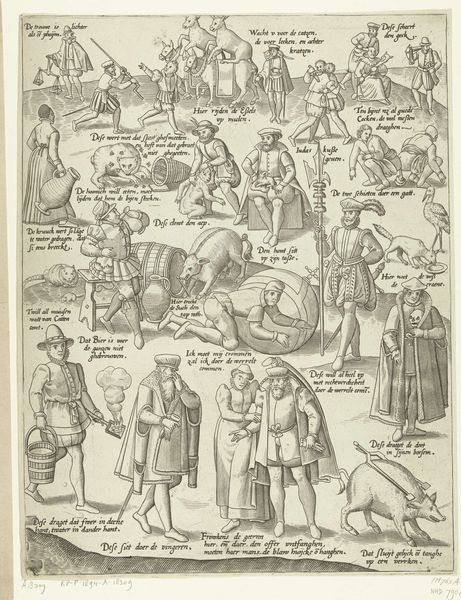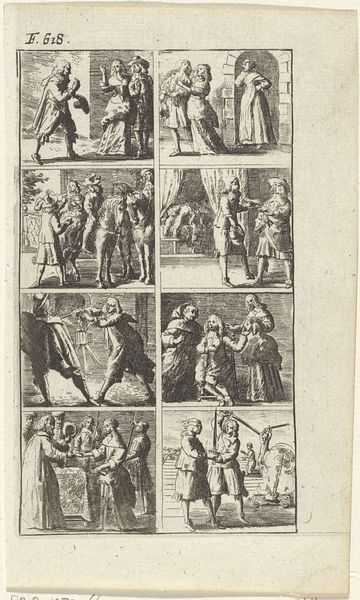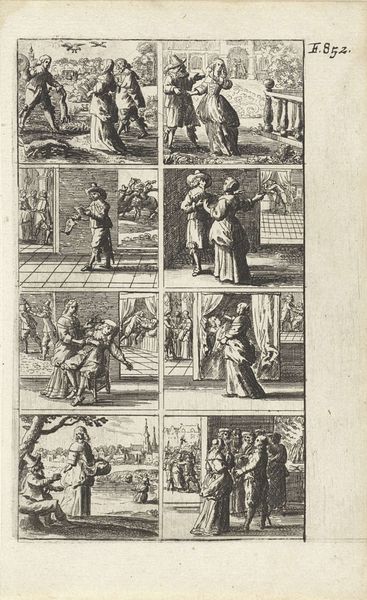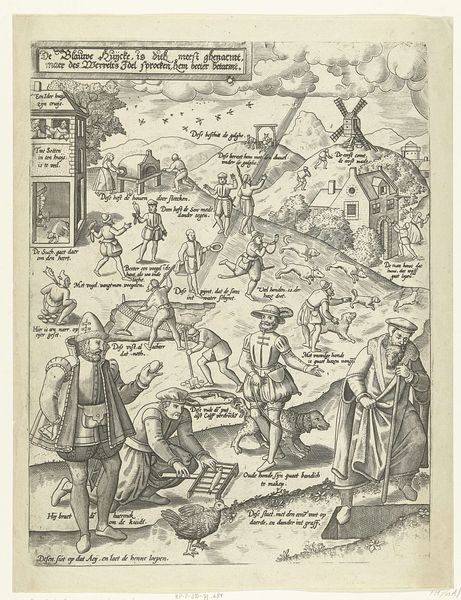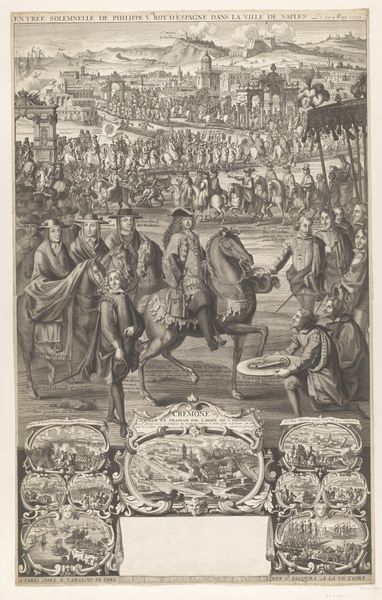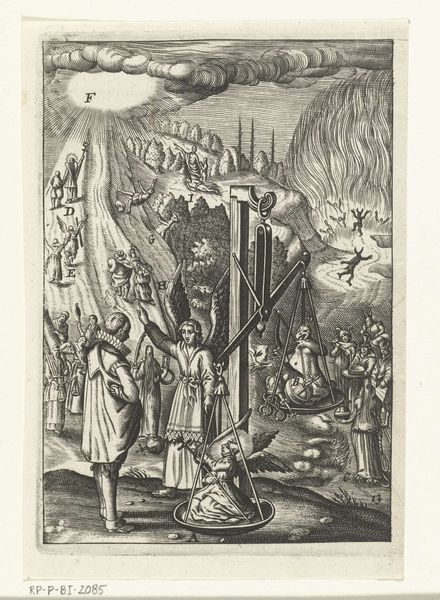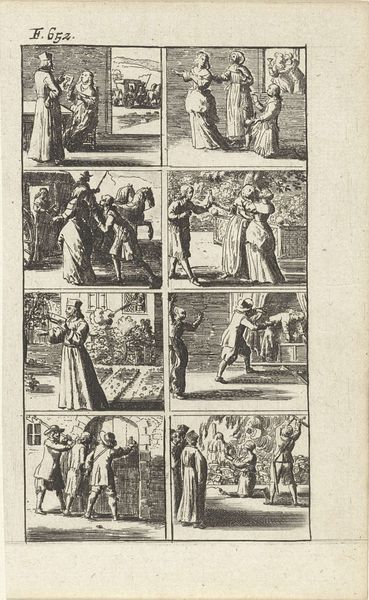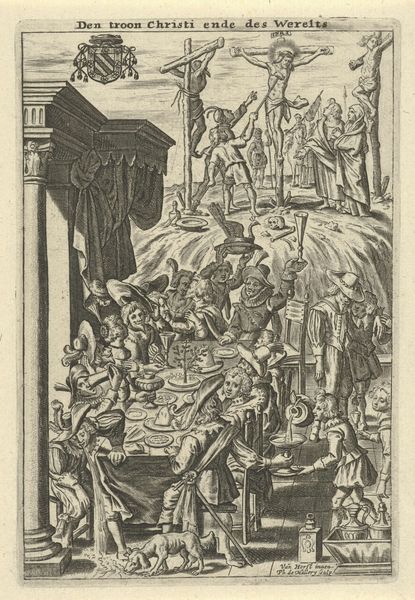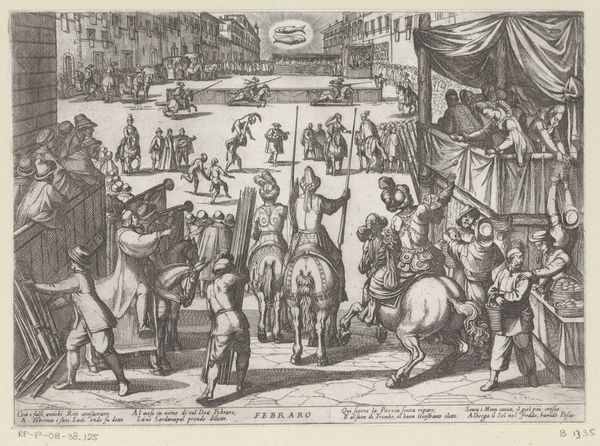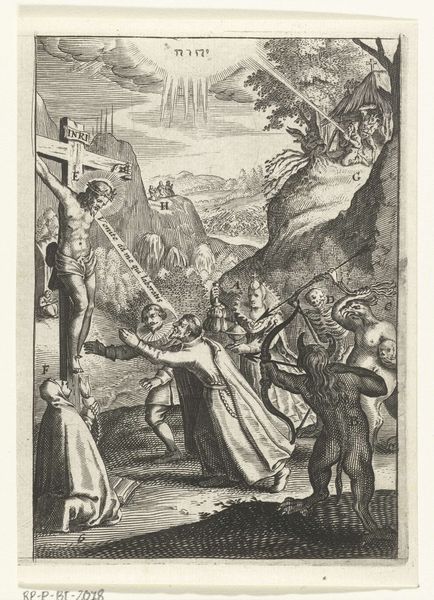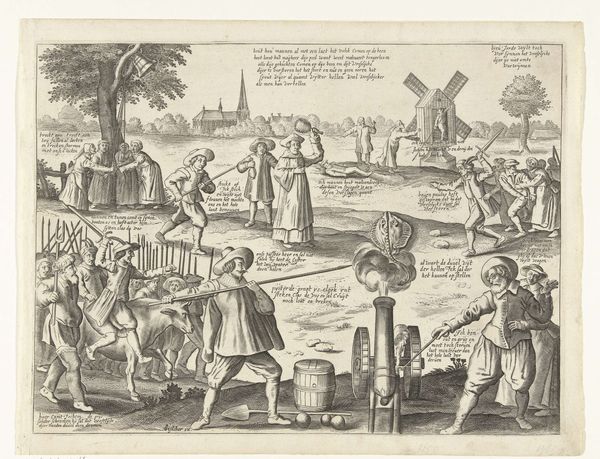
drawing, print, pen, engraving
#
drawing
#
narrative-art
# print
#
pen illustration
#
pen
#
genre-painting
#
northern-renaissance
#
engraving
Dimensions: height 376 mm, width 288 mm
Copyright: Rijks Museum: Open Domain
Curator: Here we have a print entitled "De Blauwe Huyck (blad 4)" created around 1577, possibly by Joannes van (I) Doetechum. The piece employs engraving and pen work on paper, a typical medium for the period. Editor: My first impression is of a rather chaotic social scene. It feels dense with activity, like a tapestry of interwoven narratives all vying for attention. It evokes the feeling of a bustling, perhaps unruly, market day. Curator: Indeed. Observe how the composition is segmented, almost like a comic strip, each scene visually distinct yet part of a larger unified field. The artist’s skillful use of line and detail gives each figure a unique presence. The textures achieved through hatching and cross-hatching, particularly in the clothing, are remarkably refined. Editor: Looking closer, the artwork functions as a commentary on human behavior and morality. It reveals a social critique of the era, portraying a wide array of human foibles. I'm interested in these little captions that accompany each vignette. They give context to what these various archetypes signify within a broader social structure. It seems like the artist is laying out a tapestry of contemporary behaviors. Curator: Precisely. The captions, though cryptic to us now, served as moralizing labels for contemporary audiences. Semiotically, each grouping of figures represents a particular vice or folly, creating a rich network of meaning. Editor: Considering this, it's not just an aesthetic object but a document reflecting social anxieties and cultural values of the time. It's intriguing to think about how this piece might have functioned as both entertainment and moral instruction, offering a mirror to society and prompting self-reflection, all at once. Curator: The print, when considered in light of period genre painting, exemplifies this blending of observation and symbolism, a defining trait of Northern Renaissance art. Its brilliance lies in how these details coalesce, reflecting broader societal preoccupations through its tight formal arrangements. Editor: And for me, considering this work moves us to consider the lasting impact of the anxieties of the early modern era and how visual culture becomes a vehicle for both reflecting and shaping them. Curator: It truly captures both the artistry and the social climate.
Comments
No comments
Be the first to comment and join the conversation on the ultimate creative platform.
